Migrating data from IBM DB2 to Oracle
This guide will show you how to easily migrate data from IBM DB2 to Oracle through a few simple steps with ESF Database Migration Toolkit, simplifying the complex migration processes and saving you valuable time.
Software Required:
| DMToolkit_x64.zip (63.6 MiB) |
64-bit Windows application for ESF Database Migration Toolkit 11.2.28 (2024-04-10). (md5: 593585974b19d6ccaf649b1dbe8996a1) |
| DMToolkit_win32.zip (58.8 MiB) |
32-bit Windows application for ESF Database Migration Toolkit 11.2.28 (2024-04-10). (md5: e073a088d3b711757b6a0ab3fa94520d) |
System Supported:
- Windows 7 or higher.
- IBM DB2 9.x or higher.
- Oracle 11g or higher.
Introduction:
1. In "Choose a Data Source" dialog, choose "IBM DB2";
- Enter the server name (default: localhost) and port (default: 50000).
- Enter the username (default is "db2admin") and its associated password.
- From the "Database" combobox, enter the source IBM DB2 database name.
- Choose an existing DB2 schema name by refreshing the list of all available schemas.
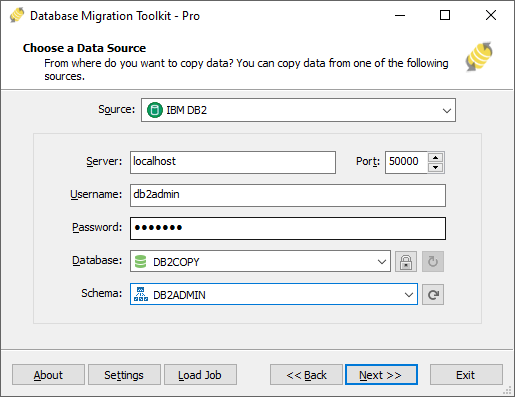
2. In "Choose a Destination" dialog, choose "Oracle";
- Enter the server name (default: localhost) and port (default: 1521).
- Enter the username (default: "SYSTEM") and password.
- Select the logon method: SID, Service_Name, or TNS.
- Enter the Oracle SID or Service_Name in the "Database" field, or leave it blank if using the TNS method.
- Enter the schema name, or leave it blank (the default is the same as the username). Press the "Refresh" button to see a list of all schemas.
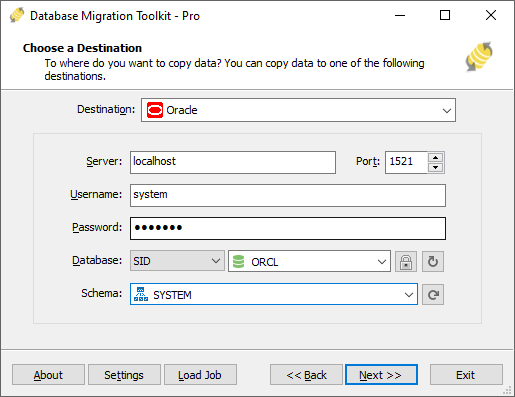
3.In "Select source Tables(s) & View(s)" dialog;
- Select the tables or views you want to migrate.
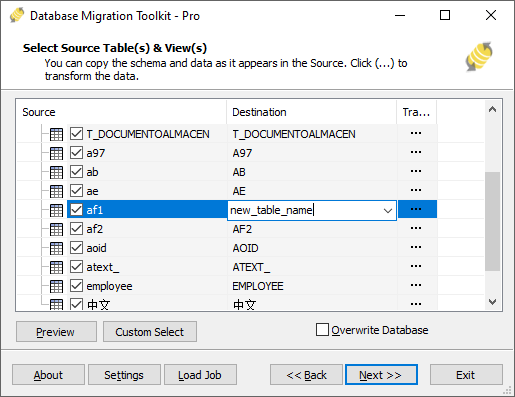
- You can access the table options or adjust the table structure by clicking the "..." button.
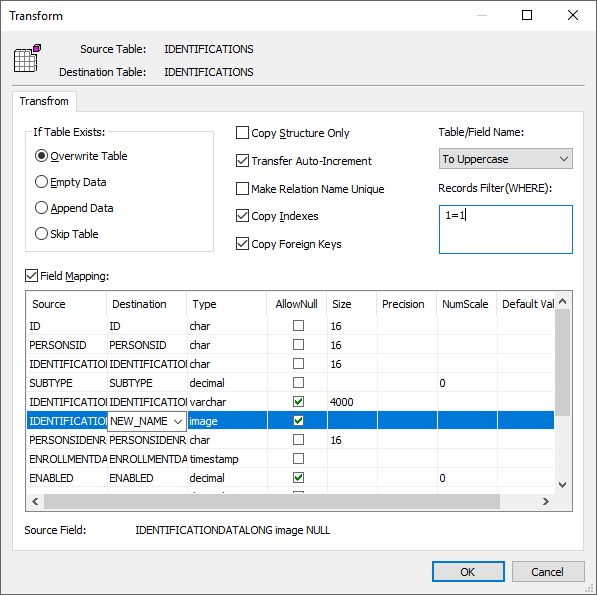
- In the "Field Mapping" option, you can customize the destination table's fields, such as field name, data type, default value, comment, and more. You also have the option to choose the data transfer method, including Overwrite Table, Empty Data, Append Data, or Skip Table, or even filter the data before transferring it.
4. In "Execution" Dialog;
- You can start the migration process by clicking "Submit". The toolkit will efficiently and seamlessly migrate your data from IBM DB2 to Oracle without the need for manual intervention.
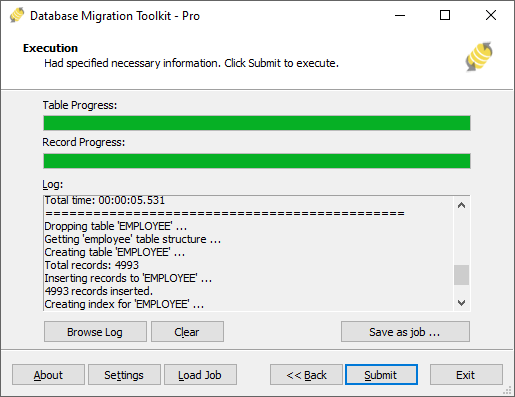
- To keep track of the migration process, you can access the full migration log by clicking "Browse Log". This will provide you with a comprehensive view of the entire migration, including any potential issues and their resolutions.
- To save time in the future, you can save the migration settings as a job file by clicking "Save as job". This allows you to quickly reload the migration job at a later time or run the migration job using the command-prompt by typing "dmtc.exe --help". The command-prompt provides you with a full list of parameters to customize the migration process to your specific needs.
5.Finished!
Upon completion, the toolkit will generate a comprehensive migration report, providing you with all the information you need to verify the accuracy and completeness of the migration process. So, you can sit back and relax while the program carries out the task efficiently. Should you have any inquiries or recommendations, don't hesitate to reach out to us. We're always happy to help.